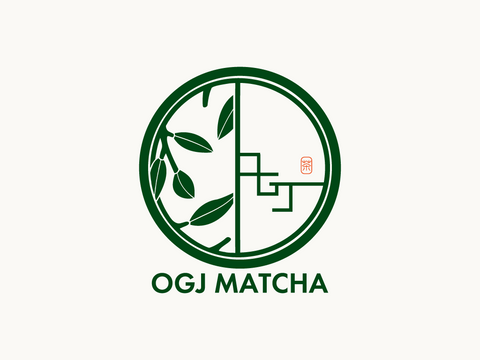Matcha Shake Made with Matcha Sauce
Introducing a matcha shake recipe that you can enjoy like a dessert!
Tools used

1.Making matcha sauce!

Sift 3g of matcha through a tea strainer into a bowl.

Next, add 6g of sugar and about 4 teaspoons of water to the same bowl.

Mix well using a tea whisk or a small whisk until fully combined.
2.Making a cookies and cream shake!


In a large bowl (or the container of a food processor or blender), combine 2 cocoa cookies, 150g of vanilla ice cream, and 100ml of milk.
For the final touch, crumble one cocoa cookie and sprinkle it on top, or place it whole for a decorative finish.

Blend with a hand blender until smooth.
The blending time affects the texture.
If you prefer a thicker consistency to eat with a spoon, blend for a shorter time.
If you want a smoother shake to drink with a straw, blend longer.
3.Serve in a glass, and it's ready!

First, pour the matcha sauce made in step 1 into a glass.

Next, gently pour the shake made in step 2 into the glass.
If you'd like to add a cocoa cookie topping, finish with it after this step.
Enjoy with a wide straw for the perfect experience!
For a stronger matcha flavor, you can increase the amount of matcha sauce.
How to make matcha ice
Endless Possibilities: How to Make Matcha Ice
Tools used

The quantities shown in the photo are based on the size of the ice tray.
Start with 3g of matcha, 6g of sugar, and 200ml of water, then adjust the amounts to match the size of your ice tray.
1.Sift 6g of matcha into a bowl using a tea strainer.

You can use any type of container, but I recommend one that allows for easy pouring when transferring the mixture into the ice tray.
2.Once the matcha has been sifted, add 12g of sugar to the same container.

3.Add a small amount of water to the container with matcha and sugar, then mix well.

Use a small amount of water from the measured 400ml.

Thoroughly mix the matcha, sugar, and water with a spoon.
While we're using a spoon this time, for a smoother blend, I recommend using a chasen (bamboo whisk) or a regular whisk.
4.Add the remaining water and mix well.


5.Gently pour to ensure even distribution, then place in the freezer until solid.

Gently pour to ensure even distribution.

6.Once frozen and solid, it's ready to enjoy!

It will freeze solid in half a day to a full day.

Once set, remove it from the mold and enjoy it in your favorite drink!
For example...

Try making a matcha squash by adding citrus juice, syrup, and sparkling water.
As the ice melts, the refreshing taste of matcha gradually blends with the crisp citrus flavors.

Another great idea is to swap the ice in your matcha latte for matcha ice, enhancing the depth of matcha flavor.
Even as the ice melts, your latte stays rich and full-bodied, ensuring a luxurious matcha experience.
Enjoy your matcha moments!
How to make a simple matcha latte.
Let me introduce a simple way to make a matcha latte.
Remember the ratio of milk to matcha as 1:10:40.
For example, if you use 2g of matcha, mix it with 20g of milk, then add another 80g of milk.
If you want to add sugar or maple syrup for sweetness, use twice the amount of matcha.
Once you remember this ratio, you’ll be able to make matcha latte effortlessly!
Tools used

0.If using a chasen, soak it in water first.

Using a dry chasen may cause the bristles to break. By soaking it in water beforehand, the chasen absorbs moisture, becoming more flexible and less prone to breakage.
1.Sift 4g of matcha powder through a tea strainer into a bowl.
If matcha powder is added without using a tea strainer, lumps may remain, affecting the texture. Always use a tea strainer when adding matcha powder to ensure smoothness.

Some people believe that matcha powder forming lumps indicates poor quality, but this is not true. The reason behind lump formation will be explained in a separate article, so please check it out if you’re interested.
For 4g of matcha powder
If using a chashaku (bamboo scoop), add 4 to 5 scoops.
If using a teaspoon, add about 2 scoops.
2.For those who want to add sweetness, add 8g of sugar.
If you prefer it without sweetness, you can leave it out. About two heaping teaspoons.

For those using maple syrup, add 8g for a mild sweetness or up to 13g for a stronger sweetness.

3.Add 40g of milk and mix using a chasen, whisk, stirrer, or milk frother.


4.Add ice to a cup, then pour in 160g of milk.

5.Add the previously mixed matcha and milk.

And that’s it—your matcha latte is ready! Stir well before enjoying.
For a more refined way to make matcha latte, check out our other article!






